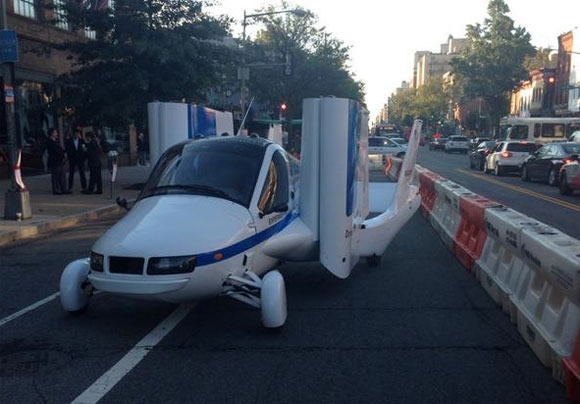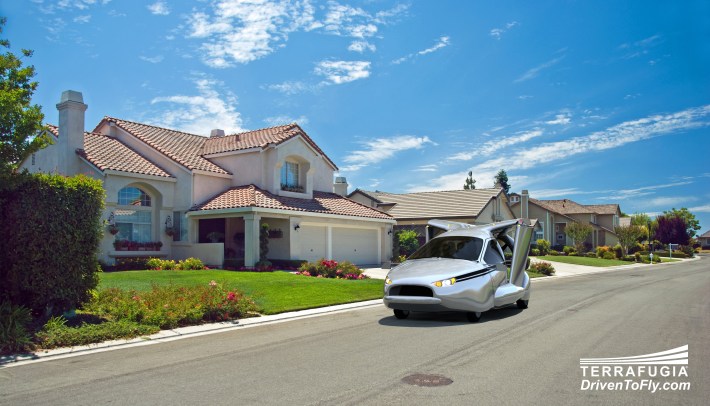
UPDATE in fourth paragraph about takeoff and landing space.
This photo pretty much says everything that needs to be said about the absurdity of the flying car.
I wouldn't even bring it up except a flying car salesman was the man of the hour at an otherwise (mostly, er, somewhat) serious daylong forum on transportation issues yesterday sponsored by the Washington Post. The flying car in question was parked outside the building, blocking a bike lane on 14th Street.
Carl Dietrich of Terrafugia ("escape the earth" in Latin) worked hard to convince the audience that what he acknowledged has long been a "pop culture joke" was a real, serious answer to the real-world problem of traffic congestion.
Not that we need to get into the numbers, but a Terrafugia plane required a third of a mile of empty runway to take off when it first -- ahem -- launched in 2009. More recent reports put it at 100 feet. I tried calling Terrafugia to confirm the figure, but no one picked up. I'll let you know if I get a response to my email. (UPDATE 10/23: Alex Min of Terrafugia replied, "The TF-X™ will be a Vertical Take-Off and Landing (VTOL) vehicle so there will be no need for a runway. Much like a helicopter, any suitable landing area will be sufficient, but you still have to abide by FAA regulations.")
Indeed, all of Terrafugia's promotional materials show personal airplanes flying above farmland, and when the wings retract the pilot retreats home to a suburban single-family McMansion where the vehicle fits conveniently inside a standard-size garage.

Terrafugia's model runs on regular automotive gasoline, not aviation fuels, making it "one of the greenest, most environmentally-friendly airplanes in the world," according to the company. Of course, it also has just a two-person capacity, and perhaps we should be comparing its greenness to the forms of land-based transportation it seeks to replace.
Challenging the audience to tackle big problems like congestion with "bold," "radical" solutions instead of "small incremental changes," Dietrich suggested that flying cars had the ability to "fundamentally increase the capacity, flexibility, robustness, and speed of personal transportation" -- with a marked emphasis on the word "personal." It's a door-to-door solution, he said, and it operates on your own schedule.
However, Dietrich does recognize that the cost of the flying car is prohibitive for most households, so he suggests a fleet of flying car taxis. Terrafugia: It's like Uber, but for flying cars...
...and nothing at all like Moulton Taylor's Aerocar, "at home on highways or skyways" back in the 1950s:





